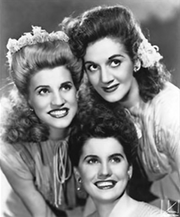| Kingdom of Rhomania Βασίλειο της Ρωμανίας Timeline: Differently
OTL equivalent: Greece, Albania, North Macedonia, outer regions of Turkey, Cyprus | ||||||
|---|---|---|---|---|---|---|
|
||||||
| Motto: Ελευθερία ή θάνατος "Freedom or death" |
||||||
| Anthem: "Θά 'ρθεις σαν αστραπή" "Thá 'rtheis san astrapí" (National anthem) "Κύριε ἐλέησον" "Kyrie eleison" (Liturgical anthem) |
||||||
| Location of Rhomania (green)
|
||||||
| Capital (and largest city) | Constantinople | |||||
| Official languages | Greek | |||||
| Ethnic groups (2020) | 76.7% Greek 8.2% Turkic nation 6.2% Albanians 3.9% Slavic Macedonians 5% other |
|||||
| Religion | 91.4% Eastern Greek Orthodoxy 3.4% Other Christian 5.2% Others |
|||||
| Demonym(s) | Rhomanian (Rhomaioi) Byzantine • Greek |
|||||
| Government | Federal parliamentary constitutional monarchy | |||||
| - | Monarch | Constantine XVI | ||||
| - | Prime Minister | Athena Palaeologa | ||||
| Legislature | Rhomanian Senate | |||||
| Establishment | ||||||
| - | Founding of Constantinople | 11 May 330 | ||||
| - | East–West division | 17 January 395 | ||||
| - | Byzantine Empire abolished | 13 February 1801 | ||||
| - | Kingdom proclaimed | 31 July 1805 | ||||
| Area | ||||||
| - | Total | 452,624 km2 174,759 sq mi |
||||
| Population | ||||||
| - | Estimate | 57,324,176 (30th) | ||||
| - | census | 2020 | ||||
| Currency | Drachma (₯) | |||||
| Drives on the | right | |||||
Rhomania, officially the Kingdom of Rhomania (Greek: Βασίλειο της Ρωμανίας, Basíleio tis Romanías) and sometimes referred to as or the Roman Kingdom, is a country in Southeast Europe. It borders Montenegro, Serbia and Bulgaria to the north and West Persia and Syria Palaestina to the east and is bounded by the Mediterranean Sea on the south, the Adriatic Sea on the west and the Black Sea on the northeast. The modern reminiscent of the old Roman Empire, Rhomania was historically one of the most powerful and educated nations in the world. Its plenty of historical sights, including decorated churches such as the Hagia Sophia, makes tourism its main economic activity. Rhomania is considered the cultural bridge between Asia and Europe. The modern state of Rhomania dates back to 1805, when the Republic of Byzantium was abolished and the current kingdom was established.
With a population of over 57 million inhabitants, Rhomania is Europe's sixth-most populous country, ranking 30th in the entire world. Its surface area of 452 square kilometers makes it the fourth-largest nation in Europe and the 57th-largest in the entire world.
Rhomania's capital and largest city is Constantinople. Other important cities include Athens, Smyrna, Thessaloniki and Heraklion.
Name[]
During most of the imperial time, Greeks referred to themselves as Romans and to their realm as the Roman Empire. From the 16th century on, the name "Byzantium", a Romanized form of Byzantion, began to be used to refer to the whole nation, and became gradually popular. In the early 19th century, the Republic was the first polity to officially call itself Byzantium. After the Varangian Rebellion in 1805, however, the Kingdom, which sought a compromise between the old tradition and the revolutionary tide, created the name "Rhomania". Currently, the adjective "Roman" is seldom used to refer to Rhomania as it was centuries ago, except in poetic or ideological contexts.
History[]
Early years of the Empire (395–1200)[]
In the late 4th century, following the death of Theodosius I, the Roman Empire was divided between the Western and Eastern Empires, with its respective capitals in the Italian Peninsula and in Constantinople. About eighty years later, the Western Roman Empire fell due to a number of factors, including invasions by barbarians. The Eastern Roman Empire, however, endured and gradually developed its own identity based on Greek culture and Orthodox Christianity, while still retaining Roman traditions. While the nationals referred to themselves as Romans, the realm would become known, many centuries later, as the Byzantine Empire.
Throughout its existence Rhomania would face cycles of glory, decline and recovery. By 600 AD, the empire ruled over most of the Mediterranean coast that once belonged to the Romans, including Rome itself. 43 years later, Rhomania lost Egypt and Syria, its richest provinces, to legions of well-armed separatists. It kept losing more territory than it gained and by 1200 it reached its approximate current shape, comprising the southern Balkans and the coast of Asia Minor.
Glory years (1200–1600)[]
Rhomania recovered its former economical glory under the Komnenid dynasty and by the 12th century, Constantinople was the largest and wealthiest city in Europe. Under the following Angelid dynasty, the empire resisted several attempts of invasion by the Crusaders during the Fourth Crusade (1202–1204) and managed to successfully preserve its hegemony and the unity of its territory.
By the mid-14th century, Rhomania was invaded by neighboring Zoroastrian Turkic states, marking the beginning of conflicts between Zoroastrian and European nations, which lasted until 1502, when those Turkic nations were conquered by the Sassanid Empire, whose emperor supported peace with Europe in favor of national unity and stability. However, unaware of this and still expecting to lose, the Rhomanian military put more fortifications into Peloponnese, which protected them from further invasions that came later.
Instability (1600–1805)[]
For the following two and a half centuries, Rhomania, albeit weakened, remained a relatively stable and prosperous nation with influence spread throughout the eastern Mediterranean and and the Australian continent. By the 1760s, however, the country plunged into an era of internal political conflicts, with many supporting the abolition of the position of Emperor. This culminated with the Rhomanian colonies in Australia revolting in 1790 and then the people on the mainland revolting in 1797 leading to a civil war, in which several political opponents fought. The war ended in 1801 with a provisional republican government in power.
Albeit initially popular, the new government started with an increasingly unstable economy caused by the recent war, generating dissatisfaction across the nation. During an unemployment crisis in 1805, the indirectly-elected president was assassinated, prompting a national revolt in which the monarchy was restored under a democratic constitution. The country was renamed from "empire" to "kingdom" and the monarch's powers were severely limited. The monarch lost his ability to dissolve the Senate and appoint ministers, although he still had considerable command over the armed forces. The new state adopted the current flag, coat of arms and anthem of Rhomania as official national symbols.
Modern times (1805–present)[]
By 1820, the country had fully recovered from its economic crisis and started a process of modernization and better relations with Western European and international powers. Over the 19th century, the kingdom became an important economic partner and diplomatic ally of Italy, Germany, Britain, France and even distant countries such as the United States, Brazil and China.
In the late 19th century, tourism was already Rhomania's main economic activity, which contributed to an economic boom in the 1890s. In 1896, the Rhomanian city of Athens inaugurated the first modern Olympic Games, giving even more prestige to the nation.
During the 1900s, Rhomania's relations with Britain and France began to deteriorate due to its support of the rival nations of Germany, Austria-Hungary and Italy. By the early 1910s, Europe was divided between this coalition, called the Quadruple Entente, and the Allied coalition formed by France, Britain and Russia. There was severe opposition among the people to Rhomania remaining in the alliance, but politicians who wanted to preserve the country's hegemony managed to maintain its position. The diplomatic tensions culminated in the Great War, which lasted four years from 1914 until the defeat of the Entente in 1918. Among the Entente nations, Rhomania was the one that suffered the most with the defeat. The country lost many lives and had several settlements decimated by the war, besides entering another era of unemployment and darkness. This economic depression resulted in Turks of Anatolia revolting in 1919, leading to the Turkic Revolution, which persisted until it was crushed by 1924. With the Turkic rebels seizing farmlands during the revolution, a famine and economic collapse spread through the country, inspiring nations from all around the world to send humanitarian aid.
While the economy would bounce back due to the economic reforms of Prime Minister Maxentius Lecapenas, the war had scarred a generation of Rhomanian youth. Rhomania participated in the Cold War against the Soviet Union, being the only country in Eastern Europe to join the First World. In the early post Cold War years, Rhomania alongside West Persia was attacked by Armenia in the late 1970s for control of the Armenian-populated regions of Anatolia, resulting in the resurgence of anti-Armenian discrimination on the part of the government. Since its economic recovery and victory against Armenia in 1980, Rhomania has re-emerged as an economic and military power in the east Mediterranean region.
On August 10th, 2022, Rhomania would formally join the newly formed European Union as a founding member, emerging as one of the dominant economic powers within the Union.
Ethnic groups[]
Although Rhomaioi are by far the largest ethnicity in Rhomania, comprising about 70% of the country's population, numerous other groups also have a significant presence, including Turks, Egyptians, Romaniote Jews, Aromanians, Afro-Rhomanians and Anatolians.
Politics[]
Branches of government[]

Coronation portrait of Constantine XVI. Constantine XVI has been the king of Rhomania since his father's abdication in 2021.
Rhomania is a federal democratic state under a parliamentary constitutional monarchy. The King of Rhomania, currently Constantine XVI, embodies the nation's unity and sovereignty and exercises limited reserve powers as the Head of State. The Rhomanian Senate, the unicameral legislature, passes laws in the kingdom and elects the Prime Minister.
The Prime Minister, currently Athena Palaeologa, acts as the chief diplomat and as the head of government for the kingdom. The Prime Minister also acts as a representative for their party due to their position as the party leader. Prior to the creation of political parties in the mid 1800s, the Prime Minister was elected by "cliques", which were loose alliances of non-partisan senators.

Flag of the Rhomanian Military.
Military[]
The Royal Rhoman Military (Βασιλικός Βυζαντιός Σταρτος) is headed by the Royal Board of National Defense. It consists of seven branches:
- The Royal Rhoman Army
- The Royal Rhoman Navy
- The Royal Rhoman Air Forces
- The Royal Rhoman Marine Corps
- The Royal Rhoman Coast Guard
- The Royal Rhoman Police Force
- The Royal Rhoman Special Forces
- The Royal Rhoman Agency
Themes[]

Themes of Byzantium
The themes or thémata (Greek: θέματα, thémata, singular: θέμα, théma) act as administrative subdivisions for the Kingdom of Rhomania. Themes are often broken down on political, culture, geographic, or ethnic lines. The largest theme is the theme of Constantinople which encompasses much all of the massive city and surrounding neighborhoods.
The themes elect their own governors and each theme is given Senators based on how many people live there. For example, the theme of Dyrrhachium is represented by 12 Senators due to its large population. In contrast, the theme of Monemvassia only has 2 senators as representation due to its smaller population.
There are currently 26 themes, with the newest theme being the Turkic Theme created in 1922.
- Themes sorted by population
| Theme | Capital | Population | Governor |
|---|---|---|---|
| Constantinople |
Constantinople | 15,102,031 | Auxentius Acominatus |
| Smyrna | Smyrna | 10,304,199 | Yianni Stratioticus |
| Anatolikon | Amorium | 6,800,392 | Justinian Tzimiskes |
| Hellas (Greece) |
Larissa | 5,102,402 | Ioannis Pagonides |
| Arvanon |
Dyrrhachion | 5,075,210 | Euphrasia Bourbolis |
| Athens |
Athens | 3,090,508 | Kostas Bakoyannis |
| Ospikon | Agios Nikolaos | 2,520,031 | Dionysios Kontas |
| Peloponnese |
Sparta | 2,028,031 | Zeno Akropolites |
| Turkic Theme |
Mergen | 2,000,132 | Eftichis Kormoglou |
| Nikopolis |
Patras | 1,300,472 | Aurelia Meloda |
| Cyprus |
Nicosia | 1,292,103 | Nicos Anastasiades |
| Crete |
Heraklion | 634,930 | Athena Cosmalli |
| Thrace |
Hadrianopolis | 410,031 | Sebastianus Botaniates |
| Optimaton | Nicomedia | 337,963 | Thodoris Pateridis |
| Thessaloniki |
Thessaloniki | 315,196 | Yiannis Boutaris |
| Paphlagonia | Gangra | 257,324 | Marieta Georgiade |
| Abydos | Granicus | 240,229 | Venantius Lascaris |
| Kibryaioton | Attaleia | 230,139 | Anthimos Stamatidis |
| Strymon | Alexandroupoli | 201,859 | Maria Kurkua |
| Scupi |
Scupi | 192,145 | Yiannis Papadapoulos |
| Euboea |
Chalcis | 191,206 | Eleni Vaka |
| Cilicia |
Adana | 164,583 | Evengelia Tassakou |
| Rhodes |
Rhodes | 115,490 | Manolis Petrellis |
| Armeniakon |
Amaseia | 108,291 | Maximianus Maniakes |
| Corfu |
Kastropolis | 102,071 | Maurinus Palamas |
| Corinthia |
Corinth | 38,132 | Ermioni Anagna |
| Monemvasia | Monemvasia | 21,942 | Olga Zografiadi |
Political parties[]
Culture[]
Sports[]

Constantinople National Stadium
Athens hosted the inaugural 1896 Olympic Games and the entire country hosted the 1995 FIFA World Cup, which its national team won.
There are stadiums with a capacity over 10,000 throughout Rhomania, including Olympic stadiums in Olympia, Athens, Smyrna, and Constantinople. Aside from the 1896 games, Rhomania would also host the 2004 Olympic Games.

Giannis Antetokounmpo, a Africam_Rhomanian basketball player of Nigerian origin, is one of the most famous basketball players in the NBA currently.
Due to being the birthplace of the Olympics, it is tradition in Olympic Game opening ceremonies for Rhomania's delegation to be called in first and this tradition has continued ever since the re-establishment of the Olympic games in 1896.
There are also many famous Rhomanian athletes who have gained international fame such as basketball player Giannis Antetokounmpo who played in a lot of local Rhomanian basketball leagues before making into into the United States' NBA and becoming famous in the United and Confederate States.

Felipe Massa at the 2009 Rhoman Grand Prix
Rhomania also hosts the annual Formula One race at Constantinople Park. Max Verstappen has won the most Rhomanian Grands Prix with 5 while Red Bull have won the most with 6 Grand Prix wins at Rhomania.

The Andreas Sisters are the most famous musical trio to come out of Rhoman with their music spreading across international markets in the 1930s and 1940s.
Music[]
Throughout the 20th and 21st Century, music has become one of Rhomania's biggest cultural exports. Throughout the 1920s and 1930s, Thessaloniki developed a very large music scene which lead to the rise of many famous Rhomanian singers such as the Andreas Sisters, who became some of the most iconic singers of the 20th century and in Rhomanian history, leading to the development of a stylization of Big Band music known as Mediterranean Big Band.
Throughout the 1950s, Thessaloniki's music scene would be shaken up when several singers hailing from the city of Nafplio known as the "Nafplio Pack" would dominate the nightclubs of Thessaloniki. Their blend of traditional Greek instruments such as the bouzouki with a jazzy rhythm would encapsulate audiences and draw more musical tourism from around the world to Thessaloniki to see their performances.
In the modern day, there are many famous singers and musicians who have come out of the Byzantine Empire such as Dua Lipa, Rita Ora, and Yianni Salellis who are well known around the world and have regularly broken U.S., European, and East Asian music charts.
Film and media[]
There have been many famous Rhomanian film directors and movies that have come out over the years. One of the most famous Rhomanian films is the 1964 film Zorba the Greek directed by Michalis Cacoyannis. It won the Academy Award for Best Picture in 1964 and shattered Box Office records in theaters across Rhomania, the United Kingdom, France, the United States, and the Confederate States. The soundtrack from Zorba the Greek is also iconic and the song Sirtaki is one of the most famous Rhomanian folk songs.
Notable film directors from Rhomania include the aforementioned Michalis Cacoyannis as well as Giannis Dalianidis, Daphne Matziaraki, and Lucia Rikaki.
Literature[]
Throughout the 20th century and 21st century, there have been a lot of books written about Rhomania and life in the country.
Education[]

The Main Academy, built in 1204, it is the oldest active educational building in the world
Rhomania is well known for the Rhomanian Academy of Arts & Sciences in Constantinople. Originally founded in 425 as a university it became an all boys boarding school in 1046. Girls were not allowed to attend until 1863. Non-Rhomaioi people were not allowed to attend until 1924. However between 1976 and 1980, Armenians were not allowed to attend the school. It is part of the ''Holy Trinity of Secondary Education'' alongside Phillips Exeter Academy in the United States and the School of Practical Learning in Peking, China. The school is also called the ''Birthplace of Rhomanian Politics'' due to the fact that nearly every king since Leo I has attended the academy. 12 out of the 20 Rhomanian Prime Ministers have also attended, among other notable alumni.
| ||||||||||||||||||




